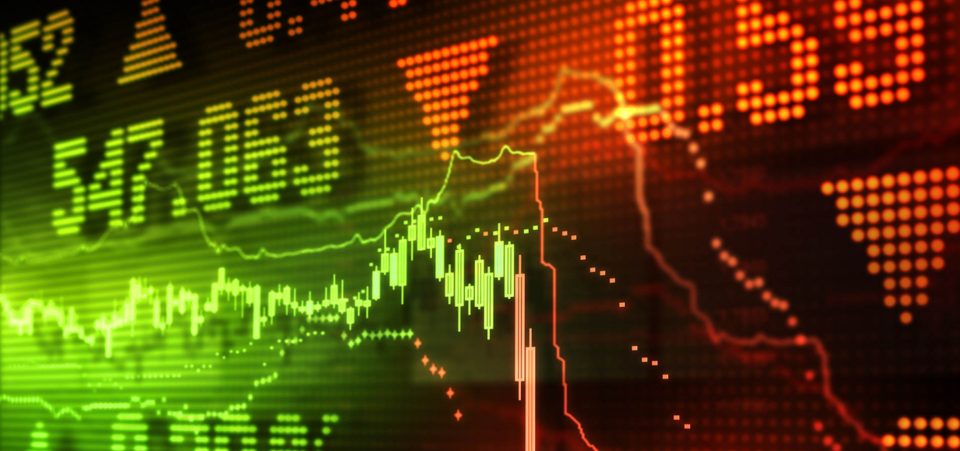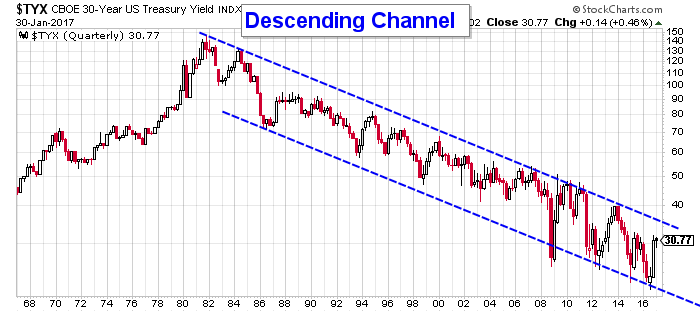Financial Crisis: Leveraged on Interest Rates
In the aftermath of the financial crisis that struck in 2008, many have been wondering if, and when, another financial crisis will come. Many pundits and media outlets continue to put out projections year after year, claiming that this is the year that the proverbial sh… will hit the fan and a financial crisis will ensue.
Many of these projections involve some sort of black swan event that creates a catalyst that spurs the domino effect that cripples the global economy. The problem with this notion is that, by definition, black swan events cannot be predicted. So this in itself is a fallacy, but it has not stopped anyone from trying to make predictions.
My biggest concerns stem from the amount of debt that is now circulating around the world. We live in a world that is driven by leverage and derivatives, in which one can borrow large sums of monies and pay little to carry this debt.
The interest rate paid on 30-year U.S. government bonds has been on a steady decline after it peaked in October 1981 at a yield of 14.59%; it now sits at a paltry 3.077%. As the interest rate on these government bonds continued to drop, that amount of global debt continued to grow, and the ramifications for the next financial crisis draw closer.
The price of big-ticket items like cars and houses are a function of interest rates. Lower rates have caused these big-ticket items to skyrocket in price while the monthly payments to carry the debt on the items have not increased, because lower rates have offset them.
This has produced a world financed by debt, with people living beyond their means, making minimum payments to support their lifestyles. It is a lifestyle that is dependent on low interest rates, which allow consumers to carry mountains of debt.
The next financial crisis will begin when interest rates start trending higher. The higher rates will create a great deal of financial stress, as the consumer who is currently drowning in debt will not be able to service it. This will cause the prices of the assets that are backed by debt to drop, creating loan losses and further stress on the financial system.
Higher-interest rates will set off a a domino effect that will cause this enormous mountain of debt to implode, creating the next financial crisis.
The following chart of the 30-year U.S. Treasury yield illustrates the orderly trend of declining rates.
Chart courtesy of StockCharts.com
The 30-year U.S. Treasury yield chart has been in a steady orderly decline since 1981. This decline can effectively be captured using a descending channel. This channel consists of two identical downward-sloping trend lines. One trend line represents support and the other trend line represents resistance. The Treasury yield has been oscillating between these trend lines. In theory, this trend toward lower rates will end when the yield exits the channel in an upward direction.
At this current juncture, resistance currently stands at 3.65%; this level would create a great deal of anxiety as it is being tested. In order to confirm that this trend is broken, yields on the 30-year U.S. Treasury would need to rise above four percent. This level would confirm that that the trend toward lower rates is broken. It would create a higher high, which suggests that a trend toward higher rates has begun.
In order for the yield to rise, the price of bonds will have to decline. A sell-off in the bond market will cause rates to rise, and any number of events could act as the catalyst. It could be higher inflation, or concerns with government debt.
The exact catalyst is almost impossible to foresee, but one thing I can say with confidence is that a break above this trend line would suggest that the run in this great bond bull market has finally come to a conclusion, and higher interest rates will follow. The ramifications of such an event are frightening, as another financial crisis will undoubtedly ensue.
Bottom Line on the Next Financial Crisis
We live in a world that has become a function of interest rates and our ability to carry the cost of the debts we have accumulated. The next financial crisis will begin when the bond bull market has come to a conclusion, and interest rates start trending higher.








